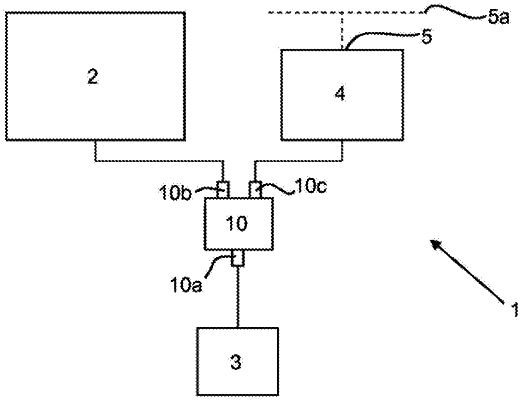| CPC G05B 19/0423 (2013.01) [G05B 19/0426 (2013.01); G05B 19/4185 (2013.01); G06F 13/14 (2013.01); G05B 2219/25428 (2013.01)] | 9 Claims |

|
1. A communication system of automation and process engineering comprising a controller as a signal receiver and a sensor as a signal source, which interchange voltage and/or current signals via a connection line,
wherein the sensor is suitable for providing digital data according to an IO-Link standard and the controller comprises only an analog and/or switching signal input, wherein the connection line is divided into two partial lines and a Y selector switch unit is inserted at the connection point,
wherein at the Y selector switch unit a first connection is provided at the sensor side and a second and a third connection are provided at the controller side,
wherein the controller is connected to the second connection and a further data receiver is connected to the third connection, and
wherein the Y selector switch unit on the one hand provides the digital data according to the IO-Link standard of the sensor at the third connection to the further data receiver and on the other hand comprises an evaluation and processing unit that taps off the digital data according to the IO-Link standard of the sensor, extracts a binary switching signal therefrom and provides it to the controller at the second connection so that the further data receiver can query the digital data of the sensor and access the sensor without the signals between the sensor and the controller being influenced thereby.
|